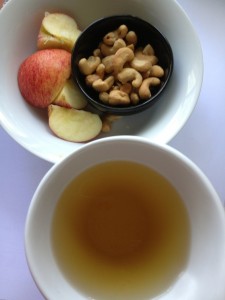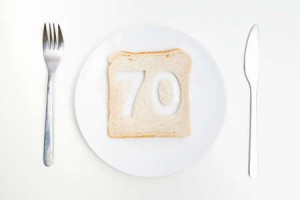Cutting out carbohydrates and quitting sugar, needs to be viewed as a “fad diet”.
Anyone who has studied nutrition and truly understands carbohydrates, simple sugars and their role in the body would never tell you to cut them out completely.
Carbohydrates are in fact necessary, glucose is in fact essential for certain cells in the body to function. Yes we can make our own, but it is costly for the body to do it that way. Yes we do eat too many refined carbohydrates and simple sugars and our food industry has a lot to answer for. In fact the Standard Australian (or American) Diet is very SAD like the acronym suggests, when you consider how nutrient poor it is and how imbalanced it is.
So where is the truth, the useful conversation about it all without having to try to function at either end of the extremes: too much or too little carbs?
Cutting out carbs all together will eventually have an effect on your gut, your energy levels and your psychology. You don’t need to cut out all carbs, you just need to understand the ones that work for you and eat those, and limit or avoid the trouble makers.
GI and GL:
First, what is useful to understand is the concepts of GI (glycaemic index) and GL (glycaemic load).
Managing your blood sugar levels is the key ingredient if you want to manage your weight, your mood, cravings and feel full of energy.
Understanding the glycaemic index and the glycaemic load of a food or a meal or a snack is the important first step.
The glycemic index relates to how quickly a food is broken down into glucose or simple sugars and enters the blood stream. The glycemic load relates to the total glucose “load” of the meal and considers portion size and the effect of combining foods.
Patrick Holford has made it easy to check whether a food is low GL or not: you can use this great tool to help you construct your meal plan: GL database
Or to get a general idea: The Journal of Clinical Nutrition published a great article which includes a full glycemic index and glycemic load table.
I have attached the link here for your convenience: International Table of Glycemic Index and Glycemic Load Values (Foster-Powell, Holt, Brand-Miller, 2002). This list can be especially useful for anyone managing diabetes.
If you can’t be bothered working that all out, the Size Fantastic program has worked out meal plans, recipes and booklets for you that you can follow with flexibility to keep you on track and help you achieve a new normal. Healthy Meals To Your Door also considers Glycaemic Load when planning its meals.
Some interesting facts about “blood sugar”.
Glucose (blood sugar) is the main fuel your body uses to produce energy. Your brain, red blood cells and nerves all rely on glucose to function well.
Insulin (a hormone produced by the pancreas) helps regulate blood sugar levels and attempts to keep them within a “healthy range”.
Uncontrolled (too high and too low) blood sugar levels can lead to serious health complications: like diabetes, hyperglycaemic, hypoglycaemia, coma, blindness, heart disease, kidney disease, fatigue, and can also affect the health of ovaries and the reproductive system.
Choosing Carbohydrates:
Carbohydrate Guide:
Important information to help you manage your blood sugar levels, manage
your energy levels, control your mood and manage your weight!
Carbohydrates are essential in the diet, they provide the primary source of energy or
fuel for the brain and red blood cells. Most carbohydrate rich foods will also
contain other important vitamins and minerals essential for health and life e.g. B
vitamins. Examples of Carbohydrate containing foods are fruit, vegetables and grains.
All carbohydrates were not created equal! The type of carbohydrate and the amount
eaten are key, and will directly affect your blood sugar. Different carbohydrates are
broken down by the body and utilized differently (this is measured with Glycaemic
Index or Load). All carbohydrates are broken down into “simple sugars” (monosaccharides) such as glucose, fructose and galactose. Glucose enters the blood stream and is either used or stored. Fructose is processed by the liver. “Sugar” is sucrose, a disaccharide (one glucose and one fructose molecule). In the body, sucrose hydrolyses into fructose and glucose. Other disaccharides include maltose and lactose. (Longer chains of sugars are called oligosaccharides which would also be broken down into simpler forms by the body before they could be used.)
The rate that this happens directly impacts on energy levels and weight, among other things, in the body.
Some carbohydrates are broken down very easily and will dramatically affect blood glucose levels, e.g. sugar or glucose or fructose in refined foods. The best carbohydrates to choose are those that are “broken down” or released slowly e.g. oats or whole grains, or when the “sugars” are packaged up in whole foods and so take time to be accessed (like in fruit). Generally those that exist in their whole form or most natural state, for example brown rice or a fresh apple. Some of these will be more “slow releasing” than others, and should be chosen in accordance with your lifestyle e.g. it is fine to choose the fast releasing carbohydrates before exercising if you are an athlete, but you wouldn’t want these if you were just sitting behind your desk. Eat only small amounts at a time of other types of carbohydrates, i.e. processed and refined forms such as sweets. When you control your “blood sugar” or blood glucose levels you can manage your weight, your energy levels and your mood.
This list below outlines some of the best carbohydrate choices (in terms of managing blood glucose in particular, but also with consideration for nutrient density). Enjoy these in their whole or most natural form:
Vegetables:
Salad leaves
Lettuce
Raddish
Cucumber
Broccoli
Courgette
Aubergine
Kale
Leeks
Onions
Asparagus
Green beans
Carrots
Green peas
Pumpkin
Sweetcorn (small serving)
Sweetpotato (small serving)
Beans and legumes
Grains:
Brown rice (especially basmati)
Quinoa
Pumpernickel bread
Sourdough rye
Oatcakes/ Oat Crackers (Nairns)
Semolina
Oats
Wholemeal wheat pasta
Wheat tortilla
Wholemeal rye bread
Fruit:
Berries (black berries, blue berries,
raspberries, strawberries)
Cherries
Pear
Grapefruit
Peach
Apricots
Orange
Plum
Apple
Kiwi fruit
Olives
Tomato
Avocado
Healthier Sweeteners:
Xylitol
Raw unrefined coconut sugar
Best Soup choices:
Tomato soup
Minestrone soup
Lentil soup
Broth
Remember to watch your serving size, the type and amount are equally
important.
Limit or have only small amounts of:
Bagel
Baguette and white breads or rolls
Muffins
Cakes
Crumpets
Croissant
Puffed rice cakes
Water crackers
Pretzels
Corn chips
Chocolate bars
Sweets/lollies
Raisins/sultanas
Dates
Condensed milk
Millet porridge
Cous cous
White rice
Potato (best option is boiled baby
potatoes or microwaved, limit to 3)
Dried fruit
Sugar
Fruit juice
Soft drinks
Alcohol
Honey
Tips:
- This is not meant to be an exhaustive list (there are many foods that do not appear here, if you want a complete list… try the resource above). This serves just to give you an idea and to help you get your head around some of the best carbohydrate options. Remember you can enjoy everything in moderation and a variety of types of food will encourage a balanced diet.
- To help lower the Glycaemic Load (the rate glucose is released into the blood stream) of a meal, you can combine some protein (e.g. nuts, seeds, beans, pulses, sprouts, cottage cheese, egg) with your carbohydrate (to ensure ease of digestion choose vegetable proteins predominantly).For example:
- Have nut butters or hummus on your bread/toast rather than jam.
- Eat a handful of raw unsalted nuts with a piece of fruit (apple, banana,mandarin).
- Have beans or lentils with your rice.
- Have some natural yogurt with your fruit salad or cereal in the morning.Eat fresh fruit rather than dried fruit.
Spread the Word to get this healthy message out! Like or share this page with your friends on your fave social media platform!




